Dr Esselstyn FAQ says:
Note that Dr Esselstyn offers two distinct concerns: his first concern applies to leafy greens; his second concern applies to fruits. Note that Dr Esselstyn is a former heart surgeon. His focus is on fortifying our endothelium for heart health. Both of his concerns explains how our endothelium is impacted if we puree fruits and veggies. To understand the leafy greens → nitrates → NO connection, please study Plant Nitrates.
Dr Fuhrman: In his book Eat for Health — Vol 1 (535 pages, 2008), he first explains that Dr Greger calls Wall Off Your Calories, and then applies the concept to smoothies and juices:
Dr Goldner's healing protocol for autoimmune conditions is centered around copious amounts of green smoothies daily. In her videos, she mentions that she has communicated to Dr Esselstyn that her patients show remarkable recovery from autoimmune conditions with green smoothies.
(5 mins) Transcript. Dr Greger's summary: "Green smoothies are put to the test for the autoimmune disease SLE (lupus)." This video mentions a publication by Dr Brooke Goldner:
Case series: Six Week Raw Vegan Nutrition Protocol Rapidly Reverses Lupus Nephritis: A Case Series by Dr Brooke Goldner, Intl J Disease Reversal and Prevention, Vol 1, No 1, 2019.
In this 7-min video (also embedded below), Dr Klaper explains that leafy greens are great! However, he used to stay away from smoothies because when we gulp them down, we bypass chewing. Of late, he's bought into the idea. Why? Because we eat a LOT more greens this way. Still, he encourages us to consume our 32 oz giant cup o smoothie slowwwwly over the course of several hours in a day by storing it in fridge and splitting it into several 4 to 6 oz portions, for example. And he encourages us to consume even a 6 oz portion over several minutes, not gulp it down at once.
The 7-part smoothie infopic series was shared on Instagram.
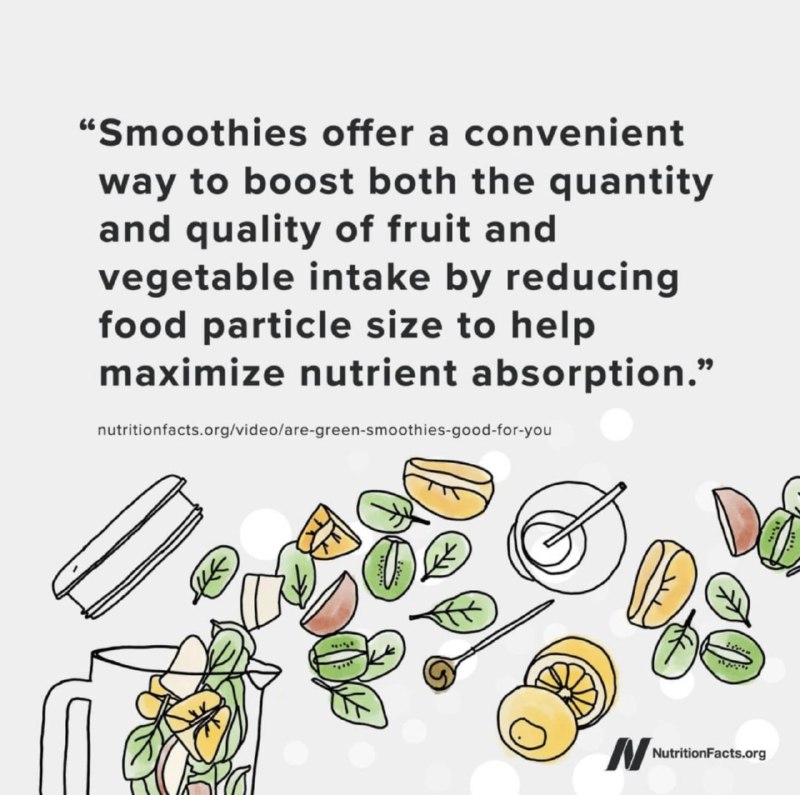
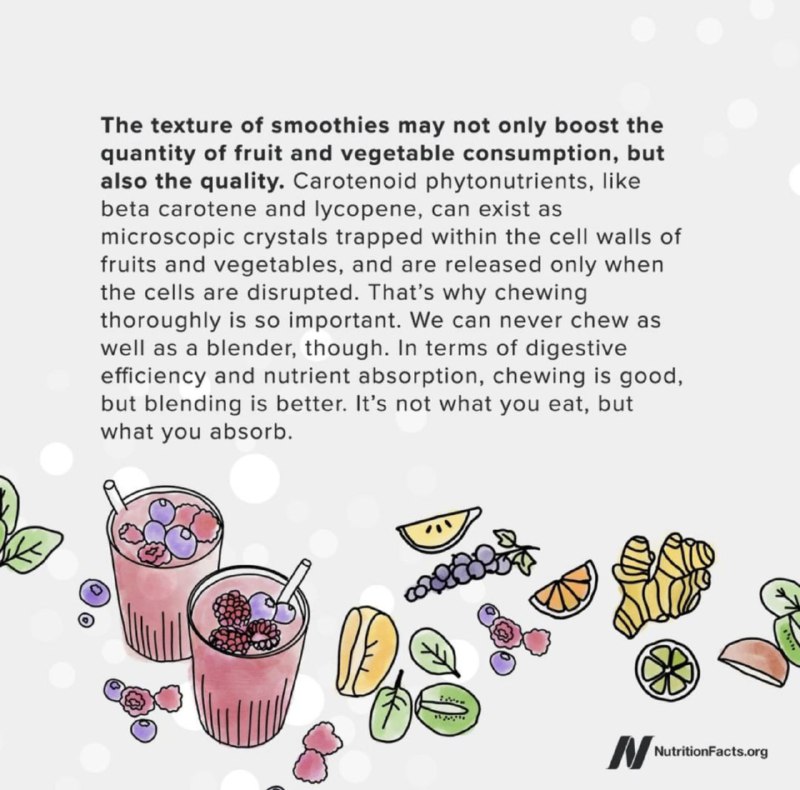
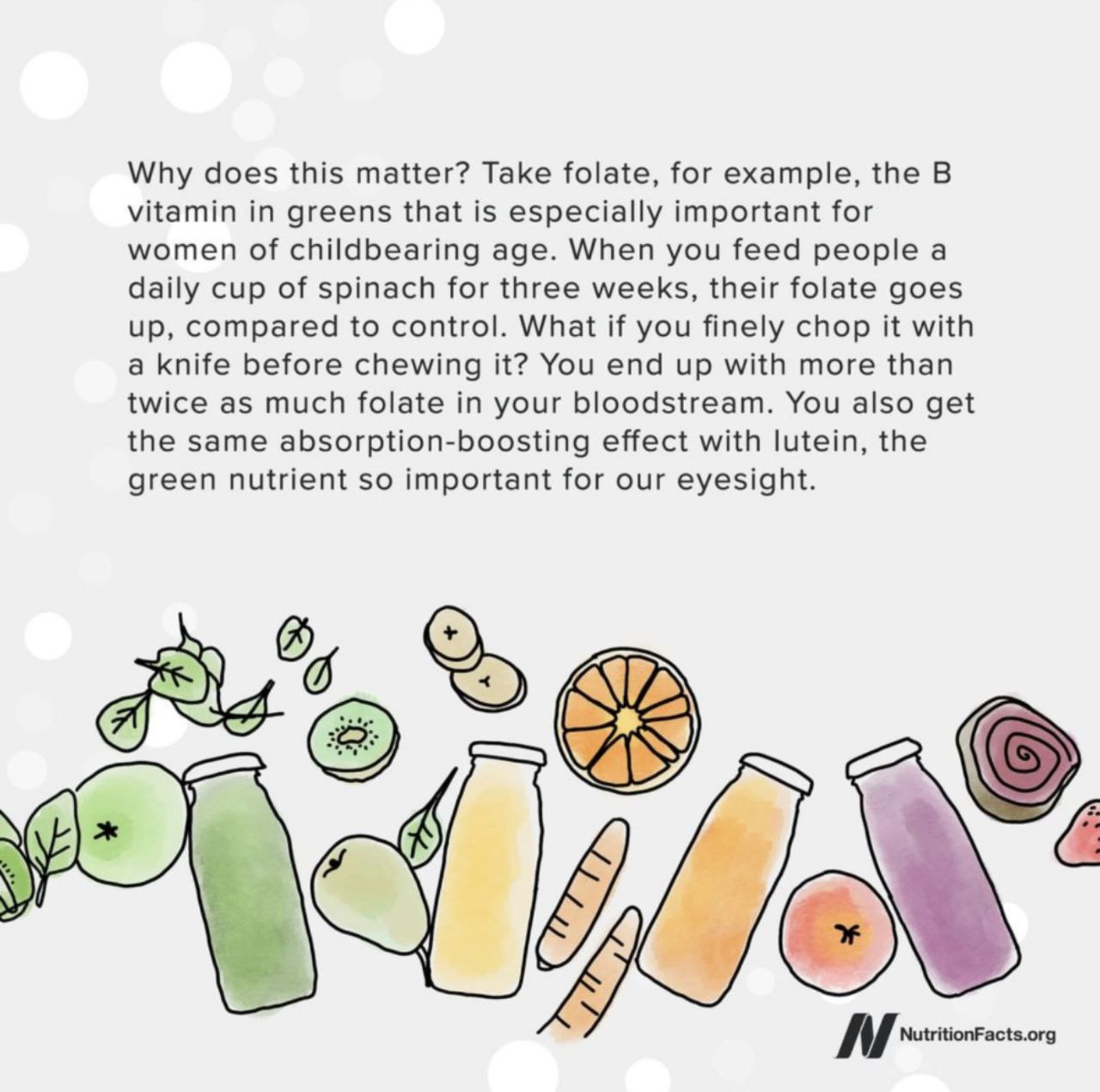
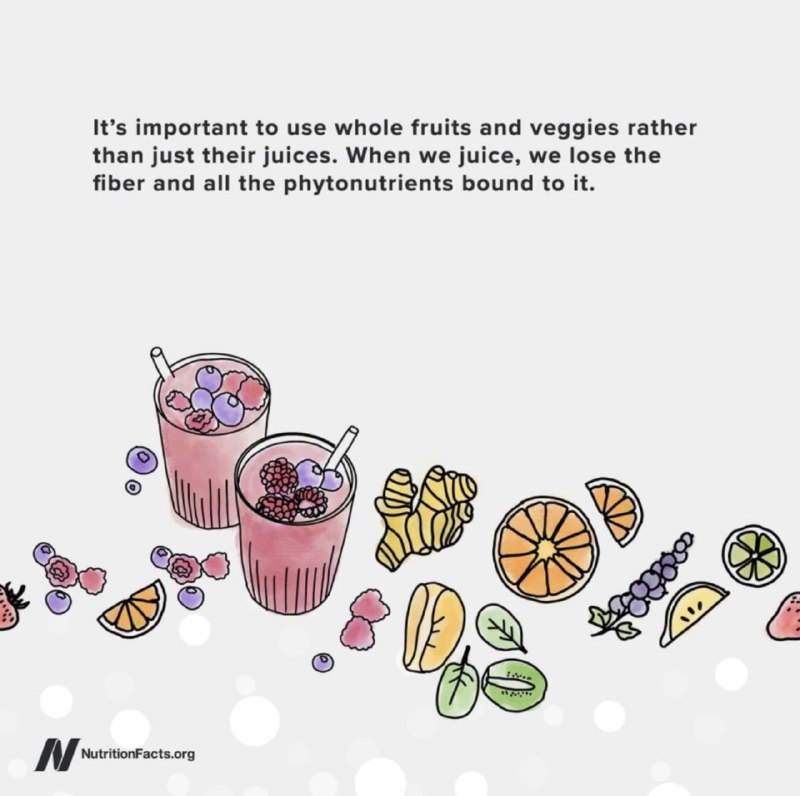
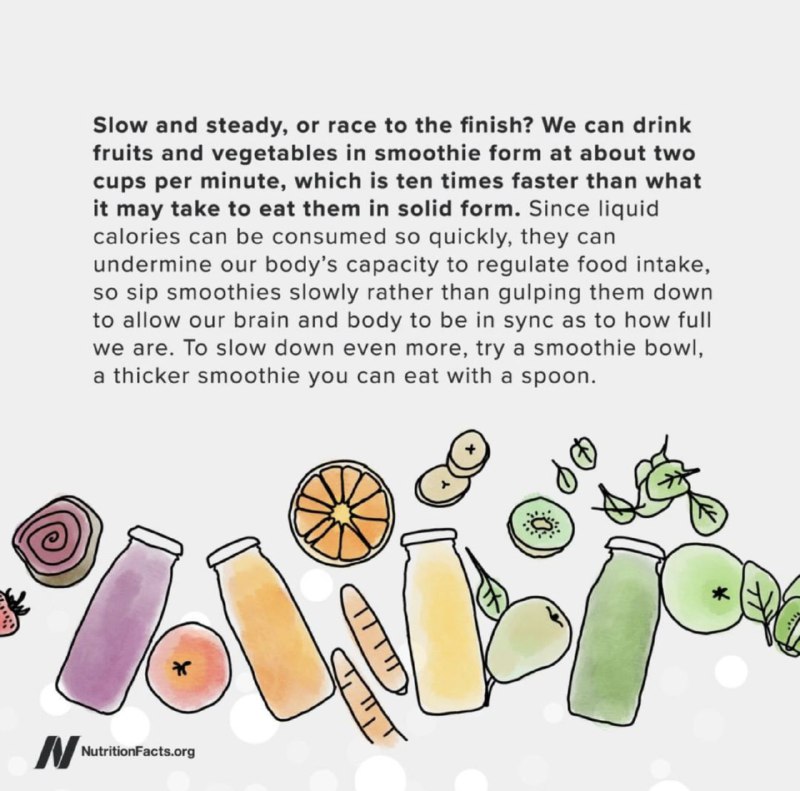
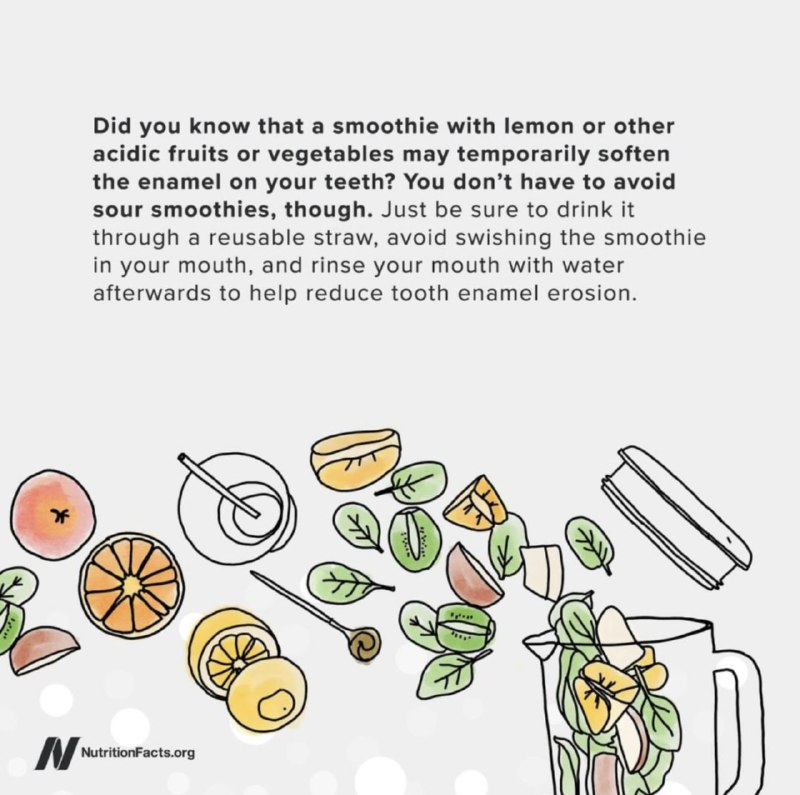
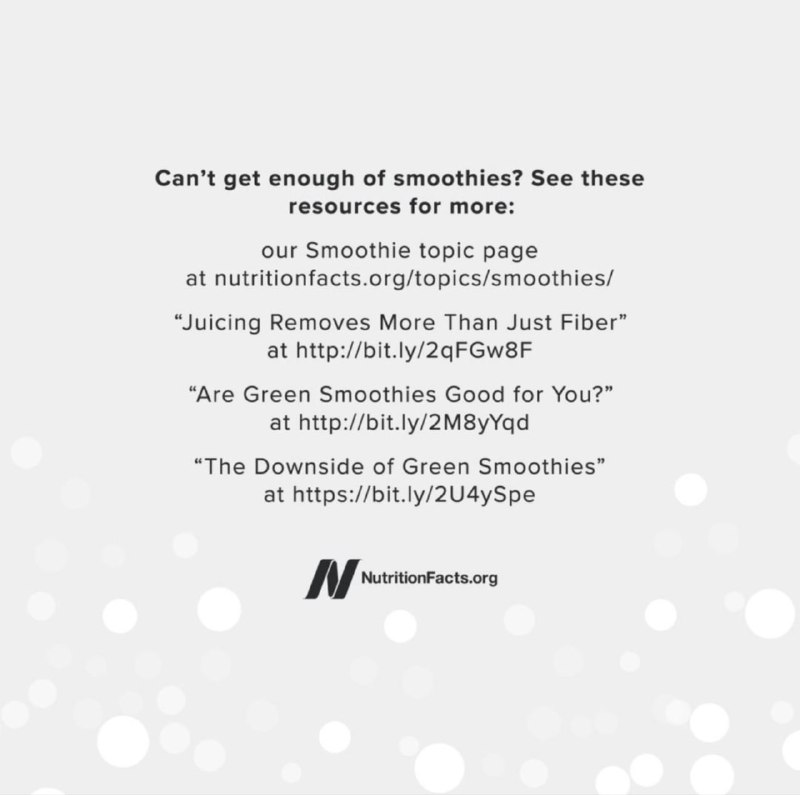
"Wall Off Your Calories": When it comes to smoothies, it would help to grasp this concept: Wall Off Your Calories, the title of a section on page 542 in the book How Not To Diet (608 pages, 2019) by Dr Greger.
Video Series: Dr Greger has a 5-part video series on smoothies in which he goes into great details on their pros and cons. Dr Greger is okay with the idea of smoothies. In fact, one of his videos is about a veggie smoothie that he loves! In this article, Dr Greger says,
In this article, Dr Greger mentions another interesting aspect of smoothies:
Articles by Dr Greger:
-
(2017) Do Smoothies Cause Overly Rapid Sugar Absorption? — an interesting article! Dr Greger explains that while apple smothies may cause sugar spikes, bananas & mangoes may not! Berries are pretty amazing — adding them to smoothies actually improves blood sugar control. Please read the article for details.
Dr Greger has a Mango Blueberry Smoothie recipe at NutritionFacts. His other smoothie recipes have berries: Pumpkin Pie Smoothie and Pre-Workout Smoothie.
Dr Greger's smoothie recipes include dates sometimes. Dates are fruits. In fact, Dr Greger is okay with making date syrup at home. See Homemade Date Syrup recipe.
- (2017) Why It's Better to Drink Green Smoothies With a Straw
Videos by Dr Greger:
(5 mins) Transcript. Dr Greger's summary: "Smoothies (and blended soups and sauces) offer a convenient way to boost both the quantity and quality of fruit and vegetable intake by reducing food particle size to help maximize nutrient absorption."
(5 mins) Transcript. Dr Greger's summary: "Eating intact grains, beans, and nuts (as opposed to bread, hummus, and nut butters) may have certain advantages for our gut flora and blood sugar control, raising questions about blending fruits and vegetables."
(4 mins) Transcript. Dr Greger's summary: "Might disrupting the fiber by blending fruit result in overly rapid sugar absorption?"
(9 mins) Transcript. Dr Greger's summary: "If our body doesn't register liquid calories as well, why are blended soups more satiating than the same ingredients eaten in solid form?"
(7 mins) Transcript. Dr Greger's summary: "Concerns about smoothies and oxalic acid, nitrate availability, dental erosion, and weight gain are addressed."
(9 mins) Transcript.
V-12 Vegetable Blast is a variation of the recipe in the video.
These recipes are also found in Dr Greger's How Not To Die (272 pages, 2017).
This FaceBook page is a great personal narrative by "The Healthy Librarian" who experimented with this recipe. How does the final preparation taste? The article says, "It's like a spicy non-alcoholic Bloody Mary, if that's your jam."
First, I had to answer to myself, "Why do I need a green smoothie at all? Can I live without them?" After all, preparing a green smoothie requires a new machine at home: a blender. Turns out that leafy green intake is a challenge for me, just like it is for many others. Green smoothies are a great way to boost leafy green intake!
Next, I wondered, "How may we combine the guidelines of Dr Esselstyn, Dr Goldner, Dr Greger, Dr Klaper and Dr Fuhrman?" to get the best of all worlds! Here is my approach:
- Blended greens open up more cells (by breaking their cell walls) for a plethora of micronutrients in leafy greens, than is possible by chewing alone. Is that a good thing? For leafy greens, yes! "Leafy greens are the best veggies", explains Dr Greger. Leafy greens are low calorie density; they are not carbohydrate rich, so they don't cause sugar spikes. It's okay to blend them, break as many cell walls as possible and consume the nutritional goodness packed in leafy greens. Yay!
- Coarse smoothie to encourage chewing: Dr Esselstyn recommends that we chew leafy greens in our mouth, instead of swallowing them quickly. Towards that goal, a coarsely ground smoothie should help. And we don't need the best modern high speed blender for preparing coarse smoothies. Also, serving coarsely ground smoothies in a cup n a saucer, with a spoon by the side, is helpful — it suggests to us that we're drinking a soup, spoonful by spoonful.
- Serve in a bowl, with a spoon by the side! If we serve a smoothie in a tumbler, we're encouraged to drink it like a liquid. However, if we serve it in a bowl, with a spoon by the side, we are encouraged to consume it like a soup, spoonful by spoonful :)
- Avoided fruit blends; add soft fruits as toppings! Dr Esselstyn's FAQ discourages fruit blending. So I prefer to sprinkle soft fruits like berries, freshly chopped bananas or mangoes on top of a coarse smoothie… to be eaten like a soup over several minutes, using a spoon. This way, easily chewable fruits like berries and bananas will be chewed in our mouth instead of being blended by a machine. If I add something chewy like pomegranate seeds, then I have to surely chew the overall smoothie for much longer!
- Rinse our mouth after smoothie! A useful guideline that I found by watching Dr Greger's videos. Rinsing our mouth after consuming smoothies protects our enamel.

 Instagram
Instagram YouTube
YouTube